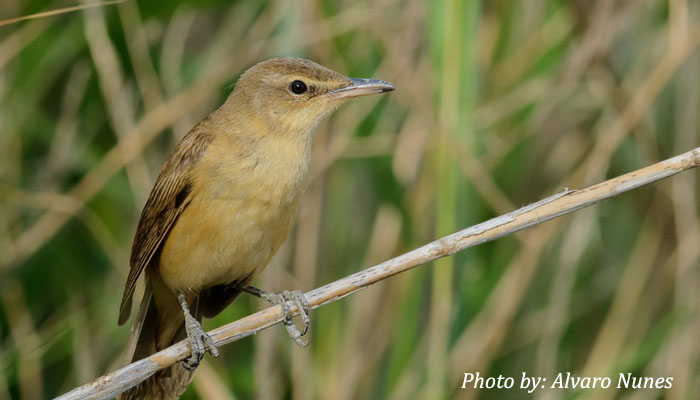
English: Great Reed Warbler,
Western Great Reed-warbler
Russian: Дроздовидная камышевка
Mongolian: Их охилбялзуухай
German: Drosselrohrsanger
French: Rousserolle turdoide
Japanese: ニシオオヨシキリ (Nishi-o-yoshikiri)
Body length: 16-20 cm.
Breeds in tall, dense and preferably extensive reedbeds; if necessary makes do
with smaller reedbegs, e.g. along canals and dykes. Summer visitor (May-Aug in
N of range), winters in tropical Africa. Basket-shaped nest woven around strong
reed stems at medium height above water.
Identification: Like
a larger version of Reed Warbler, similar in color (brown above, buff-white
below) and with same habitat and same type of song. Apart from size and gruffer
voice, differs in: proportionately larger head and bill (thick and long like
thrush’s); usually dark spot at tip of lower mandible; slightly longer tail;
somewhat longer primary projection (with clear white tips to primaries); often
slightly more distinct, broader pale supercilium and on average darker lores
and eye-stripe; often a trifle paler and more grey-brown nape/hindneck. At closest
range, a few fine grey streaks on lower throat/upper breast. Legs pinky-brown
or brown-grey. Sexes alike. –Adult late summer: Usually somewhat worn, with
lighter brown-grey cast above and whiter below. Primaries worn, brownish-grey.
–Juvenile: Plumage uniformly fresh, warm rusty-brown above and buffish below.
Primaries fresh, dark with pale tips.